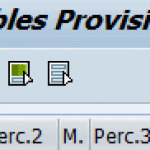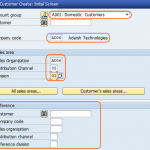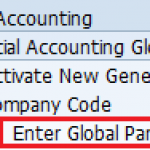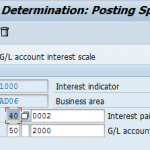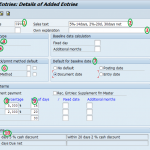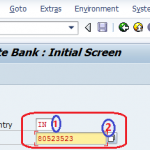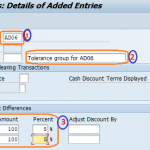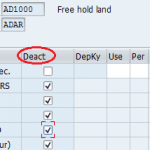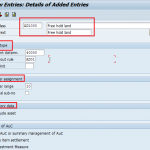Bad debts configuration steps Step 1: – Define Methods Access the transaction using one of the following navigation options. SAP IMG Path: – SPRO > IMG > Financial Accounting > Accounts Receivable and Accounts Payable > Business Transaction > Closing > Valuate > Reserve for Bad Debt > Define Methods. Transaction Code: – OB04 On the “Change View “Receivable provision: Methods”: overview” select
Read more →Create Customer master data in SAP Customer can be a person or an organization to whom you are providing goods and services. Customers can be external or internal If customers are providing goods and service, you can link customer master data to vendor master data. Customers are business partners whom the organization does sales related transactions. Customer master data can
Read more →Enter Global Parameters SAP IMG Path : – SPRO -> SAP Reference IMG (F5) -> SAP Customizing Implementation Guide -> Financial Accounting -> Financial Accounting Global Settings -> Company Code -> Enter Global Parameters. Transaction Code: – OBY6 Double click on your company to enter global parameters Update the following fields. > Chart of accounts: – chart of accounts is a list of
Read more →Interest calculation configuration can be done by two methods i.e Interest calculation on account balances and Interest calculation on areas. Interest calculation configuration steps Step 1: – Define the interest calculation procedure Step 2: – Prepare account balance interest calculation Step 3: – Define reference interest rates Step 4: – Define Time based terms Step 5: – Enter interest values
Read more →Maintain terms of payment The following tutorial guides you on how to Maintain terms of payment in SAP. We are creating payment term key CP03 which is applicable for both customers and vendors. Terms of Payment are used for vendor and customer invoice payments with conditions of cash discount allowed within a period of payment, the due date for payment,
Read more →Define House Bank in SAP House bank of a company code is represented by a bank id through which you can process payment transactions. It is used for the purpose of the payment program, check deposits, automatic payment programs (APP), and bank reconciliation A house bank in SAP is identified by a 5 character alphanumeric code. Each house bank ID
Read more →How to Create a bank key in SAP FICO SAP R/3 Path :- Accounting –> Financial Accounting –> Accounts Receivable/Accounts Payable –> Master Records –> Bank –> Create Step 1: – Enter transaction code FI01 in the SAP command field and enter Step 2: – Update the following fields and enter Enter the Bank country Enter the new Bank key which you want to
Read more →Define tolerance group for vendors /Customers Importance of tolerance group: – The tolerance group is very important to define in the SAP system to facilitate dealing with the differences in payment SAP R/3 IMG Menu Path : – IMG > Financial accounting > Accounts receivable and accounts payable > Business transactions > Outgoing payments > Manual outgoing payments > Define
Read more →Steps to Determine Depreciation area in the Asset Class SAP R/3 IMG Menu Path: – IMG –> Financial Accounting –> Asset Accounting –> Valuation –> Determine Depreciation areas in the Asset Class Transaction code: – OAYZ Step 1: – Enter T-Code OAYZ in the SAP command field and press Give the chart of depreciation and enter To find the existing asset class
Read more →The following training tutorial guides you on creating new asset classes in SAP FI-AA step by step. SAP Menu Path :- IMG >> Financial Accounting >> Asset Accounting >> Organisational Structure >> Asset Classes > Define Asset Classes Transaction Code : – OAOA Step 1: – Enter transaction code OAOA in the sap command field and press enter Select the “New Entries”
Read more →